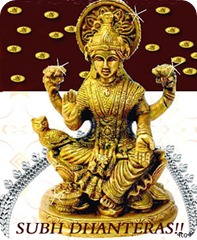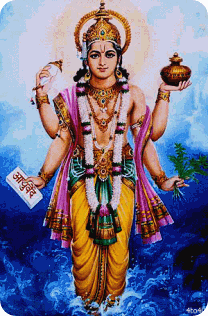Well, Where to report it now????? (Link)
Diwali (or Deepavali) is the third day of the Diwali festival.
"Diwali", the festival of lights, illuminates the darkness of the New Year's moon, and strengthens our close friendships and knowledge, with a self-realization!"
Diwali is celebrated on a nation-wide scale on Amavasya - the 15th day of the dark fortnight of the Hindu month of Ashwin, (October/November) every year. It symbolizes that age-old culture of India which teaches to vanquish ignorance that subdues humanity and to drive away darkness that engulfs the light of knowledge. Diwali, the festival of lights even to-day in this modern world projects the rich and glorious past of India.
Every year on the dark nights of Diwali the sound of firecrackers announces the celebration of the favorite festival of Indians. Homes are decorated, sweets are distributed by everyone and thousands of lamps are lit to create a world of fantasy. Of all the festivals celebrated in India, Diwali is by far the most glamorous and important. Enthusiastically enjoyed by people of every religion, its magical and radiant touch creates an atmosphere of joy and festivity.
The ancient story of how Diwali evolved into such a widely celebrated festival is different in various regions and states of India. In the north, particularly in Uttar Pradesh, Punjab, Haryana, Bihar and the surrounding areas, Diwali is the day when King Rama's coronation was celebrated in Ayodhya after his epic war with Ravana, the demon king of Lanka. By order of the royal families of Ayodhya and Mithila, the kingdom of which Sita was princess, the cities and far-flung boundaries of these kingdoms were lit up with rows of lamps, glittering on dark nights to welcome home the divine king Rama and his queen Sita after 14 years of exile, ending with an across-the-seas war in which the whole of the kingdom of Lanka was destroyed.
On the day of Diwali festival, doorways are hung with torans of mango leaves and marigolds. Rangolis are drawn with different colored powders to welcome guests. The traditional motifs are often linked with auspicious symbols of good luck. Oil diyas are arranged in and around the house. Because of these flickering lamps, the festival has acquired its name : Dipawali or Diwali meaning 'a rows of lamps'. On this day, people buy something for the house or some jewelry for the women of the house. It is auspicious to be buy something metallic, such as silver.
Whatever may be the fables and legends behind the celebrations of Diwali, all people exchange sweets, wear new clothes and buy jewelry at this festive time. Card parties are held in many homes. Diwali has become commercialized as the biggest annual consumer spree because every family shops for sweets, gifts and fireworks. However, in all this frenzy of shopping and eating, the steady, burning lamp is a constant symbol of an illuminated mind.
The festival of Diwali is not only significant to Hindus, but, has importance in Jainism, Buddhism, and Sikhism. For Hindus, it is associated with the return of Lord Rama to Ayodhya, after his 14 years of exile and victory over the demon Ravana.
On that day, he was welcomed to the kingdom to Ayodhya with rows of Deep, lightened throughout the kingdom.
Thus, there is a tradition of lighting oil lamps that symbolize the victory of good over evil and freedom from spiritual darkness.
Hindus, also make preparations to welcome goddess Lakshmi by drawing rangoli, and footsteps (Paduka) On the entrance that would allure goddess Laksmi to visit one’s home and bring prosperity along with her.
"Diwali", the festival of lights, illuminates the darkness of the New Year's moon, and strengthens our close friendships and knowledge, with a self-realization!"
Diwali is celebrated on a nation-wide scale on Amavasya - the 15th day of the dark fortnight of the Hindu month of Ashwin, (October/November) every year. It symbolizes that age-old culture of India which teaches to vanquish ignorance that subdues humanity and to drive away darkness that engulfs the light of knowledge. Diwali, the festival of lights even to-day in this modern world projects the rich and glorious past of India.
Every year on the dark nights of Diwali the sound of firecrackers announces the celebration of the favorite festival of Indians. Homes are decorated, sweets are distributed by everyone and thousands of lamps are lit to create a world of fantasy. Of all the festivals celebrated in India, Diwali is by far the most glamorous and important. Enthusiastically enjoyed by people of every religion, its magical and radiant touch creates an atmosphere of joy and festivity.
The ancient story of how Diwali evolved into such a widely celebrated festival is different in various regions and states of India. In the north, particularly in Uttar Pradesh, Punjab, Haryana, Bihar and the surrounding areas, Diwali is the day when King Rama's coronation was celebrated in Ayodhya after his epic war with Ravana, the demon king of Lanka. By order of the royal families of Ayodhya and Mithila, the kingdom of which Sita was princess, the cities and far-flung boundaries of these kingdoms were lit up with rows of lamps, glittering on dark nights to welcome home the divine king Rama and his queen Sita after 14 years of exile, ending with an across-the-seas war in which the whole of the kingdom of Lanka was destroyed.
On the day of Diwali festival, doorways are hung with torans of mango leaves and marigolds. Rangolis are drawn with different colored powders to welcome guests. The traditional motifs are often linked with auspicious symbols of good luck. Oil diyas are arranged in and around the house. Because of these flickering lamps, the festival has acquired its name : Dipawali or Diwali meaning 'a rows of lamps'. On this day, people buy something for the house or some jewelry for the women of the house. It is auspicious to be buy something metallic, such as silver.
Whatever may be the fables and legends behind the celebrations of Diwali, all people exchange sweets, wear new clothes and buy jewelry at this festive time. Card parties are held in many homes. Diwali has become commercialized as the biggest annual consumer spree because every family shops for sweets, gifts and fireworks. However, in all this frenzy of shopping and eating, the steady, burning lamp is a constant symbol of an illuminated mind.
The festival of Diwali is not only significant to Hindus, but, has importance in Jainism, Buddhism, and Sikhism. For Hindus, it is associated with the return of Lord Rama to Ayodhya, after his 14 years of exile and victory over the demon Ravana.
On that day, he was welcomed to the kingdom to Ayodhya with rows of Deep, lightened throughout the kingdom.
Thus, there is a tradition of lighting oil lamps that symbolize the victory of good over evil and freedom from spiritual darkness.
Hindus, also make preparations to welcome goddess Lakshmi by drawing rangoli, and footsteps (Paduka) On the entrance that would allure goddess Laksmi to visit one’s home and bring prosperity along with her.
Kali Choudas (काली चौदस), also known as ‘Narak Chaturdashi (नरक चतुर्दशी)’ or ‘Chhoti Diwali’ , is the second day of the Diwali Festival.
Kali means Dark (evil) and Chaudas - Fourteenth. Thus, celebrated 14th day of Ashwin, Kali Chaudas is the day allotted to the worship of Maha-Kali or Shakti and is believed that on this day Kali killed the wicked Raktavija. Also referred to as Narak-Chaturdashi, Kali Chaudas is day to abolish laziness and evil which create hell in our life and shine light on life. The strength to protect others is referred as Kali, and if its used for God's work it is called Mahakali.
Kali Chaudous is also attached to the legend of Lord Hanuman. Hanumanji as a baby was very hungry. Whilst lying down he saw the sun in the sky and thought it was a fruit and went to pick it. He flew into the sky and put the whole sun in his mouth causing darkness throughout the entire universe. Lord Indra requested that Hanumanji return the sun. When Hanumanji refused, Lord Indra unleashed his vajra and knocked Hanumanji down to earth releasing the Sun.
On this day we offer poojan to Hanumanji as our Kuldev to protect us from Evil. The poojan is performed with oil, flowers, chandan and sindur. Coconuts are also offered to Hanumanji and prashad of Sesame seed, ladoos and rice with ghee and sugar.
The rituals of Kali Choudas is strongly suggestive of the origin of Deepavaali as an harvest festival is performed. On this day delicacies are prepared from pounded semi-cooked rice (called Poha or Pova). This rice is taken from the fresh harvest available at that time. This custom is prevalent both in rural and urban areas especially in Western India.
On this day, a head wash and application of kajal in the eyes is believed to keep away the kali nazar (evil eye). Some say that those who are into tantra, learn their 'mantras' on this day. Alternatively, people offer Nived (food) to the goddess that is local to where they are originally from. This goddess is called their 'Kul Devi', in order to cast off evil spirits. Some families also offer food to their forefathers on this day. The second day of Diwali is known as Kali Choudas in Gujarat, Rajasthan & few part of Maharashtra. This reverence is called "Kali Chaudas or Kal Chaturdasi".
Kali means Dark (evil) and Chaudas - Fourteenth. Thus, celebrated 14th day of Ashwin, Kali Chaudas is the day allotted to the worship of Maha-Kali or Shakti and is believed that on this day Kali killed the wicked Raktavija. Also referred to as Narak-Chaturdashi, Kali Chaudas is day to abolish laziness and evil which create hell in our life and shine light on life. The strength to protect others is referred as Kali, and if its used for God's work it is called Mahakali.
Kali Chaudous is also attached to the legend of Lord Hanuman. Hanumanji as a baby was very hungry. Whilst lying down he saw the sun in the sky and thought it was a fruit and went to pick it. He flew into the sky and put the whole sun in his mouth causing darkness throughout the entire universe. Lord Indra requested that Hanumanji return the sun. When Hanumanji refused, Lord Indra unleashed his vajra and knocked Hanumanji down to earth releasing the Sun.
On this day we offer poojan to Hanumanji as our Kuldev to protect us from Evil. The poojan is performed with oil, flowers, chandan and sindur. Coconuts are also offered to Hanumanji and prashad of Sesame seed, ladoos and rice with ghee and sugar.
The rituals of Kali Choudas is strongly suggestive of the origin of Deepavaali as an harvest festival is performed. On this day delicacies are prepared from pounded semi-cooked rice (called Poha or Pova). This rice is taken from the fresh harvest available at that time. This custom is prevalent both in rural and urban areas especially in Western India.
On this day, a head wash and application of kajal in the eyes is believed to keep away the kali nazar (evil eye). Some say that those who are into tantra, learn their 'mantras' on this day. Alternatively, people offer Nived (food) to the goddess that is local to where they are originally from. This goddess is called their 'Kul Devi', in order to cast off evil spirits. Some families also offer food to their forefathers on this day. The second day of Diwali is known as Kali Choudas in Gujarat, Rajasthan & few part of Maharashtra. This reverence is called "Kali Chaudas or Kal Chaturdasi".
 Diwali or Deepavali is popularly known as the festival of lights.It is an important five-day festival in Hinduism, Sikhism and Jainism. It is a Five-Day Festival. Today is the first day: Dhanteras.
Diwali or Deepavali is popularly known as the festival of lights.It is an important five-day festival in Hinduism, Sikhism and Jainism. It is a Five-Day Festival. Today is the first day: Dhanteras. Dhanteras Festival, also known as Dhantrayodashi or Dhanwantari Triodasi, falls on the auspicious thirteenth lunar day of Krishna Paksha in the Hindu month of Kartik (October/November). In the word Dhanteras, "Dhan" stands for wealth. On Dhanteras Goddess Laxmi is worshiped to provide prosperity and well being. Hence Dhan Teras holds a lot more significance for the business community.
Legends:
A very interesting story about Dhanteras Festival says that once the sixteen year old son of King Hima. was doomed to die by a snake-bite on the fourth day of his marriage as per his horoscope. On that particular fourth day of his marriage his young wife did not allow him to sleep. She laid all the ornaments and lots of gold and silver coins in a big heap at the entrance of her husband's boudoir and lighted innumerable lamps all over the place. And she went on telling stories and singing songs.
coins in a big heap at the entrance of her husband's boudoir and lighted innumerable lamps all over the place. And she went on telling stories and singing songs. When Yama, the god of Death arrived there in the guise of a Serpent his eyes got blinded by that dazzle of those brilliant lights and he could not enter the Prince's chamber. So he climbed on top of the heap of the ornaments and coins and sat there whole night listening to the melodious songs. In the morning he quietly went away. Thus the young wife saved her husband from the clutches of death. Since then this day of Dhanteras came to be known as the day of "Yamadeepdaan" and lamps are kept burning throughout the night in reverential adoration to Yam, the god of Death.
According to another popular legend, when the gods and demons churned the ocean for Amrit or nectar, Dhanavantri (the physician of the gods and an incarnation of Vishnu) emerged carrying a jar of the elixir on the day of Dhanteras.
Preparations:
To mark the auspicious day, houses and business premises are renovated and decorated. Entrances are made colorful with lovely traditional motifs of Rangoli designs to welcome the Goddess of Wealth and Prosperity. To indicate her long- awaited arrival, small footprints are drawn with rice flour and vermilion powder all over the houses. Lamps are kept burning all through the nights. Traditions:
On Dhanteras Hindus consider it auspicious to purchase gold or silver articles or at least one or two new utensils. It is believed that new “Dhan” or some form of precious metal is a sign of good luck. "Laxmi-Puja" is performed in the evenings when tiny Diyas of clay are lighted to drive away the shadows of evil spirits. "Bhajans"-devotional songs- in praise of Goddess Laxmi are also sung.Celebrations:
Dhanteras is celebrated with gusto and enthusiasm. "Lakshmi-Puja" is performed in the evenings when tiny diyas of clay are lighted to drive away the shadows of evil spirits. Bhajans ir devotional songs- in praise of Goddess Laxmi are sung and "Naivedya" of traditional sweets is offered to the Goddess. There is a peculiar custom in Maharashtra to lightly pound dry coriander seeds with jaggery and offer as Naivedya.In villages cattle are adorned and worshiped by farmers as they form the main source of their income. In south cows are offered special veneration as they are supposed to be the incarnation of Goddess Lakshmi and therefore they are adorned and worshiped on this day.
Once again we are back with the best of the demotivational Posters…
These posters are great, some of them are really funny but if a random image and a text is all it takes to get you going everyday, you might have serious problems. We’re not going to show you some cool motivational pics today because we’ve gathered a gallery with the funniest and probably the best demotivational posters. Enjoy!
Click HERE for the part 1…

These posters are great, some of them are really funny but if a random image and a text is all it takes to get you going everyday, you might have serious problems. We’re not going to show you some cool motivational pics today because we’ve gathered a gallery with the funniest and probably the best demotivational posters. Enjoy!
Click HERE for the part 1…

Good comic books can often times outshine the best book, song, film, or television program. The in-depth story details, accompanied by amazing illustrations give comics their own identity. Many influential characters have been born through comic strips, including a long list of famous superheroes. The first comic book appeared in the US in 1934. Despite their name, comic books are not necessarily only humorous. Many modern comic books tell stories in a variety of genres. In the US the super-hero genre dominates the market, although many other types of comics exist in Japan and various European nations, including the widely popular samurai series.
Subscribe to:
Posts (Atom)
Popular Posts
-
These posters are great, some of them are really funny but if a random image and a text is all it takes to get you going everyday, you might...
-
Once again we are back with the best of the demotivational Posters… These posters are great, some of them are really funny but if a random ...
-
Good comic books can often times outshine the best book, song, film, or television program. The in-depth story details, accompanied by amazi...
-
These girls look so sexy… Just can not choose which are more beautiful and attractive, they which are drawn or the ones that are real. ...
-
This post is originally written by one of my reader, Jena Ellis. She wants to share her article with my readers. So I am re-blogging her pos...






